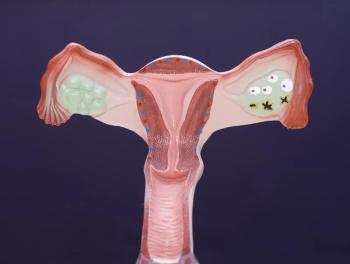
Niraparib Offers New Option in Heavily Pretreated Ovarian Cancer
Researchers conducted the QUADRA trial to examine if niraparib could improve outcomes in heavily pretreated patients with ovarian cancer.
Niraparib showed promising and clinically relevant activity as therapy for heavily pretreated patients with ovarian cancer, according to a new phase II study. This was particularly true among women with homologous recombination deficiency (HRD)-positive tumors.
“Although most patients with advanced ovarian cancer respond to initial therapy, 70% will relapse and ultimately succumb to their disease,” wrote study authors led by
The proportion of patients who achieve a response to therapy tends to decline with each subsequent retreatment, and the median overall survival of those who progress after a third line of therapy is less than 1 year. Based on early-phase trial results, the researchers conducted the new QUADRA trial to examine if niraparib, a PARP inhibitor approved for use as maintenance therapy in recurrent ovarian cancer, could improve outcomes in heavily pretreated patients.
This was a single-arm, open-label, phase II trial, including a total of 463 patients with relapsed high-grade serous epithelial ovarian, fallopian tube, or primary peritoneal cancer. All patients had received at least 3 or more previous chemotherapy regimens, and patients were treated with niraparib 300 mg once daily until disease progression. The results were
The median age in the study was 65 years; most patients were white (85%), and approximately half were HRD-positive (48%), while 19% had germline or somatic BRCA mutations. Patients had received a median of 4 previous lines of therapy.
The trial is ongoing, and the efficacy analysis included 47 patients. Of those, 13 patients (28%) achieved an overall response, which met the study’s primary endpoint (one-side P = .00053). The median progression-free survival in these patients was 5.5 months, and the median duration of response was 9.2 months. Thirty-two of those 47 patients achieved disease control (68%).
In a modified per-protocol analysis including 456 patients, the median overall survival was 17.2 months. Patients with BRCA mutations had a median overall survival of 26.0 months. Those who were HRD-positive had a median overall survival of 19.0 months, compared with 15.5 months in those who were HRD-negative. The proportion of patients achieving a response was highest in those with BRCA mutations and HRD positivity.
All-grade adverse events were consistent with previous clinical findings with niraparib. The most common grade 3 or higher drug-related, treatment-emergent adverse events included anemia (24%) and thrombocytopenia (21%). Treatment-emergent adverse events led to dose interruption in 62% of patients, dose reductions in 47% of patients, and discontinuation of niraparib therapy in 21% of the cohort.
“Niraparib could represent a meaningful treatment option and be considered an alternative to established chemotherapy regimens for late-line treatment of patients with ovarian cancer on the basis of the current treatment landscape in this area of high unmet need,” the authors concluded.
In an accompanying
The challenge, however, is that this group of patients is not identifiable based on BRCA mutation status, HRD status, or platinum sensitivity. “There remains a crucial need for more accurate biomarkers,” the authors wrote. “We must remain committed to research and signature characterization, both for patients who will unequivocally benefit the most and have to receive niraparib during their disease course, but also for those who are not showing a substantial clinical benefit and for whom overall survival remains disappointing.”
Newsletter
Stay up to date on recent advances in the multidisciplinary approach to cancer.



















































































